The #MeToo Movement: Empowering Women
written by art historian & curator
The #MeToo movement, which gained global prominence in 2017, has emerged as a powerful force in addressing issues related to women’s status and perception, sexual harassment, and gender inequality. This movement, primarily driven by social media, has brought to light the pervasive nature of harassment, amplified the voices of survivors, and initiated a conversation about the urgent need for societal change.
Videos you may enjoy as well:
For far too long, the shame and stigma associated with sexual harassment and assault silenced victims, preventing them from coming forward. #MeToo has shifted this narrative, encouraging survivors to speak out and confront their perpetrators. One of the central aspects of empowerment through #MeToo is the realization that survivors are not alone in their experiences. When individuals share their stories using the hashtag, they often begin with “Me too,” signifying that many others have endured similar traumas. This sense of solidarity has allowed survivors to shed their feelings of isolation and self-blame.
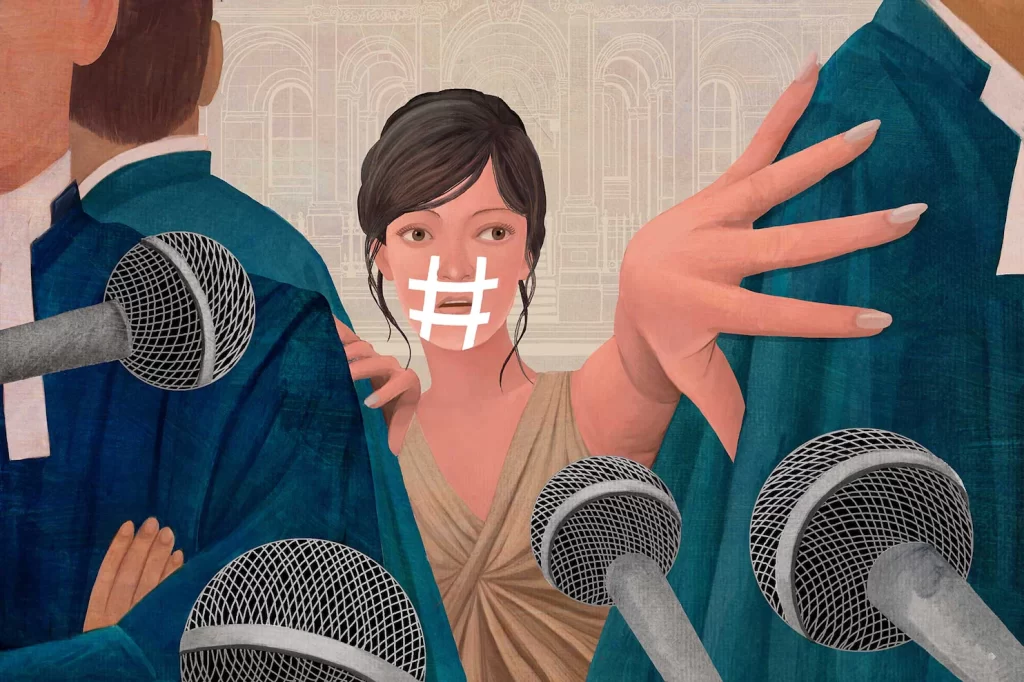
Moreover, the movement has challenged prevailing stereotypes and misconceptions about victims of harassment. It has debunked the harmful notion that victims invite harassment or assault through their clothing or behavior. Instead, #MeToo underscores that harassment is about power and control, not the actions of the victim. This paradigm shift has been instrumental in empowering women to come forward without fear of being blamed or disbelieved.
Exposing the Magnitude of Harassment
The #MeToo movement was initiated by activist Tarana Burke. Tarana Burke is an African-American activist who started the movement in 2006 as a way to provide support and solidarity to survivors of sexual harassment and assault, particularly within marginalized communities. The movement gained widespread recognition and momentum when it went viral on social media in late 2017, following allegations of sexual misconduct against several high-profile individuals in the entertainment industry. While the movement was originally started by Tarana Burke over a decade earlier, it was the viral social media campaign in 2017 that brought #MeToo to the forefront of public consciousness and turned it into a global movement.
One of the most striking revelations of the #MeToo movement is the sheer magnitude of sexual harassment. It has shown that harassment is not confined to a few isolated incidents but is a pervasive issue that affects women across all walks of life. The movement has exposed the prevalence of harassment in various industries, including entertainment, politics, academia, and the corporate world. High-profile cases involving celebrities and influential figures have garnered significant media attention, illustrating that even those in positions of power are not immune to allegations of misconduct. This has led to public scrutiny and has initiated discussions about accountability, often resulting in legal consequences, job loss, or reputational damage for perpetrators.
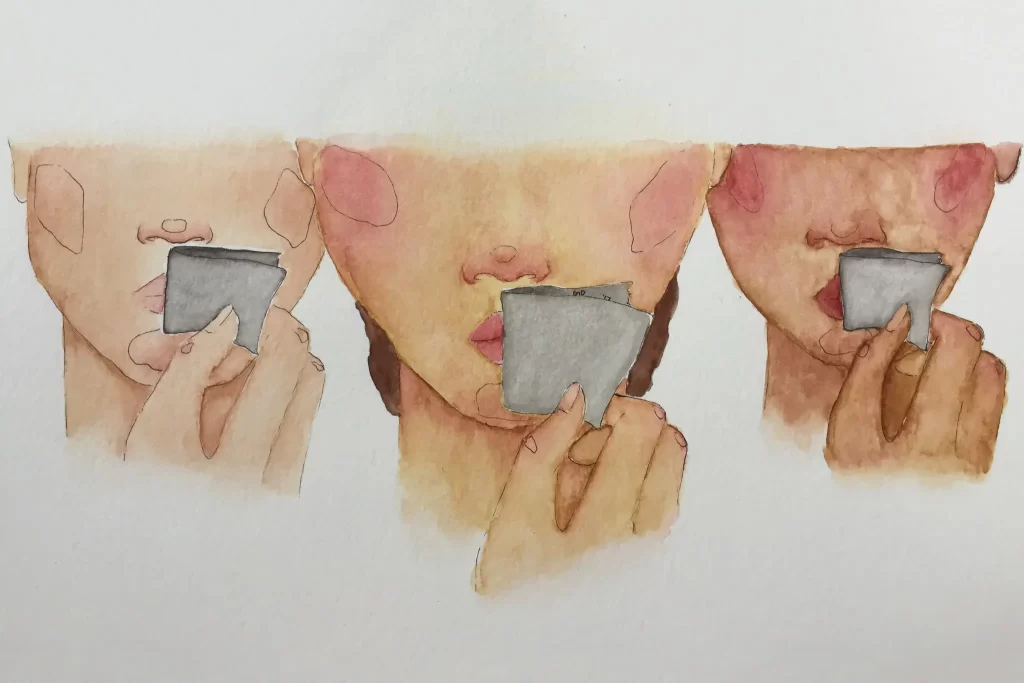
One of the most significant cases that fuelled the #MeToo movement involved Harvey Weinstein, a prominent Hollywood producer. In 2017, numerous women, including actresses like Ashley Judd and Rose McGowan, came forward with allegations of sexual harassment and assault against Weinstein. This watershed moment led to widespread media attention, and Weinstein’s trial in 2020 resulted in a guilty verdict, with a sentence of 23 years in prison. Bill Cosby, a renowned comedian and actor, faced allegations of sexual assault from dozens of women over several decades. In 2018, he was convicted of drugging and sexually assaulting Andrea Constand in 2004, marking a significant legal victory for survivors. His case became emblematic of the challenges survivors often face when accusing powerful figures. Another famous case involved Larry Nassar, a former USA Gymnastics team doctor and Michigan State University physician. He was accused of sexually abusing hundreds of young female gymnasts under the guise of medical treatment. His case received widespread media attention, leading to a reckoning within the gymnastics community and the sports industry as a whole.
Confronting Gender Inequality
While #MeToo primarily focuses on harassment, it has also been a catalyst for addressing broader issues of gender inequality. The movement has underscored that harassment is a symptom of a larger problem rooted in unequal power dynamics between men and women. Firstly, #MeToo has highlighted the gender disparities that persist in the workplace. Women continue to face unequal pay, limited career advancement opportunities, and workplace cultures that tolerate or even perpetuate harassment. By exposing these inequalities, the movement has prompted companies and institutions to revisit their policies and practices, with some implementing measures to create safer and more equitable work environments.
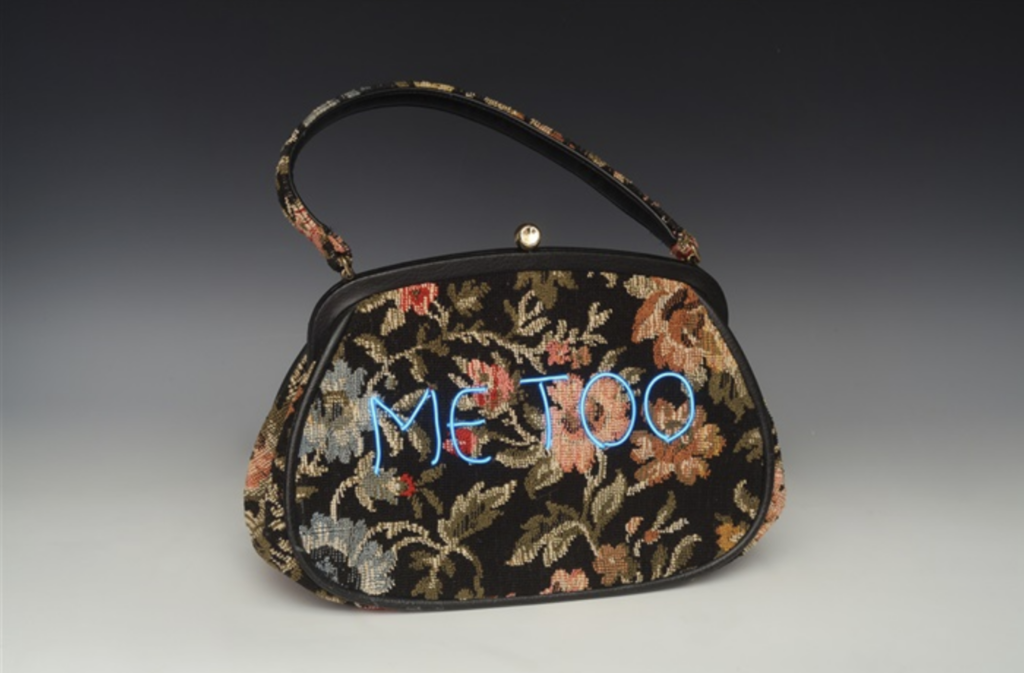
Secondly, #MeToo has drawn attention to the underrepresentation of women in positions of power and leadership. In many industries, women hold fewer executive roles, board seats, and political offices than men. This lack of representation not only perpetuates gender inequality but can also contribute to cultures that allow harassment to flourish unchecked. Furthermore, #MeToo has prompted a reevaluation of societal norms and attitudes regarding gender roles and expectations. It challenges traditional notions of masculinity and femininity and encourages a more inclusive and respectful understanding of gender. This reexamination of societal norms is essential for dismantling the structures that enable harassment and inequality to persist.
The #MeToo Movement in the Art World
For many years, the art world harboured a legacy of silence regarding issues of harassment and gender inequality. It was a world where powerful figures, often male, wielded immense influence over artists, curators, and critics, leading to a culture of complicity and fear. Women artists, in particular, faced significant barriers to recognition and success, and many suffered in silence, hesitant to speak out against the powerful individuals who controlled their opportunities. The #MeToo movement challenged the long-standing status quo and demanded accountability within the art world.. #MeToo has empowered artists, curators, and other individuals within the art world to speak out about their experiences of harassment and abuse.
Amanda Schmitt came forward with allegations of sexual harassment and abuse by a prominent artist, Chuck Close, who was known for his hyperrealist portraits. In a brave and candid account published in The New York Times in 2017, Schmitt detailed her experiences and the toll they had taken on her career and emotional well-being. Schmitt’s decision to share her story marked a significant moment in the art world. It illustrated how even established and respected figures within the art community could be held accountable for their actions. Schmitt’s courage in speaking out not only empowered her but also inspired other artists and survivors to come forward with their stories. It prompted calls for greater transparency and accountability, leading to changes in how galleries and institutions handle such allegations and the implementation of stricter ethical guidelines.

Amanda Schmitt’s willingness to share her story encouraged a culture of speaking out and advocating for a safer and more equitable environment within the art community. The movement has prompted actions such as calls for increased representation of women artists in galleries and museums, equal opportunities for recognition and success, and changes in the power dynamics that perpetuate gender-based discrimination. Many art institutions and organizations have responded to #MeToo by implementing new policies and procedures to address harassment and ensure a safer working environment. These changes often include the appointment of diversity and inclusion officers and the development of reporting mechanisms for incidents of misconduct.
Through powerful and thought-provoking artworks, other artists have contributed as well to conversations about these vital issues, sparking dialogue, awareness, and change. As early as 1979, Judy Chicago’s iconic “The Dinner Party” is an installation artwork that features a triangular table with place settings for 39 historical and mythological women. Each setting represents a significant woman from history, celebrating their achievements and highlighting their struggles for equality. The artwork stands as a feminist masterpiece, challenging the erasure of women from historical narratives. Through “The Dinner Party,” Chicago empowers women’s voices and underscores the importance of recognizing and celebrating their contributions to society.
Created in 2018, Michele Pred‘s neon artwork, “Time’s Up,” is a direct response to the #MeToo and #TimesUp movements. The bright red letters of the piece symbolize a call to action, demanding an end to sexual harassment and discrimination. Pred’s artwork has become a symbol of solidarity with survivors and a powerful visual reminder of the ongoing fight for gender equality. Through her art, she brings the message of these movements to the forefront of public consciousness.
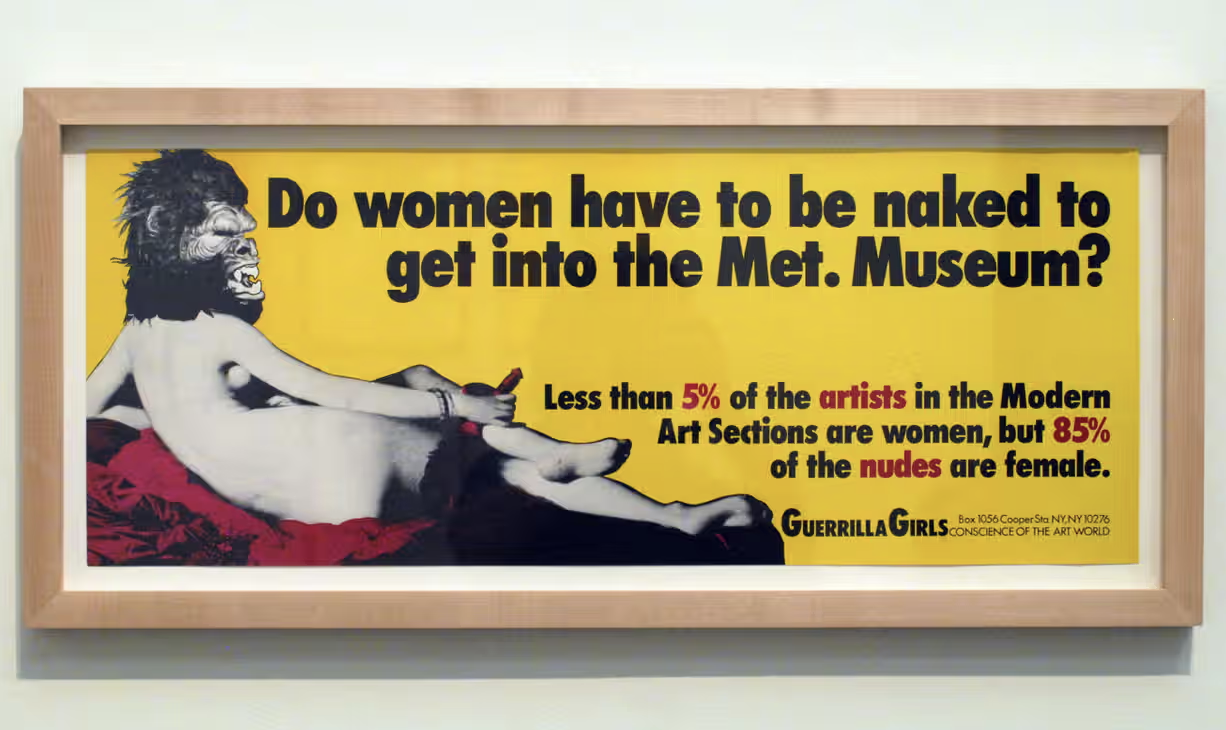
Last, but not least, The Guerrilla Girls, an anonymous feminist artist collective, has been using art and activism to address gender inequality and discrimination in the art world since 1985. Through provocative posters, billboards, and artworks, they highlight disparities in representation and opportunities for women and artists of color. Their confrontational approach forces the art world to confront its own biases and inequities, sparking discussions about gender and racial disparities in art institutions.
In an era marked by a growing awareness of these issues, artworks serve as beacons of hope and symbols of resistance. Whether through installations such as Judy Chicago’s or Michele Pred’s, candid photography like Nan Goldin’s, or poignant pieces of the Guerilla Girls, many artists have contributed to a broader conversation about societal change. They remind us that the power of art extends far beyond aesthetics; it can be a catalyst for social transformation, challenging us to rethink our values, confront injustices, and work towards a more inclusive society.

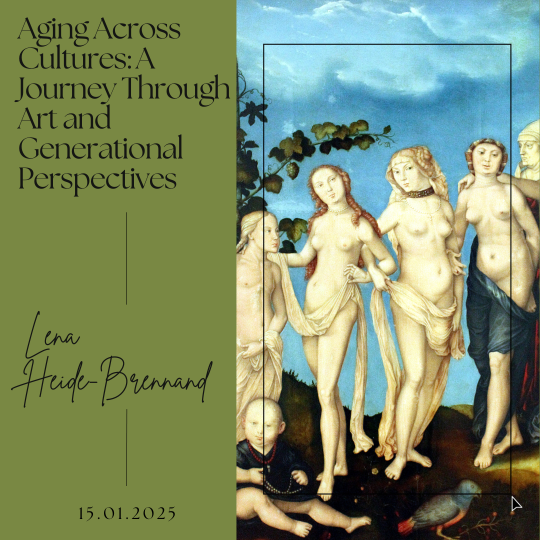
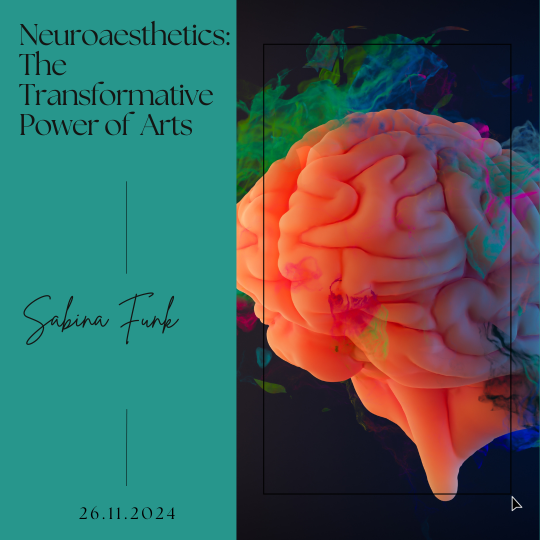
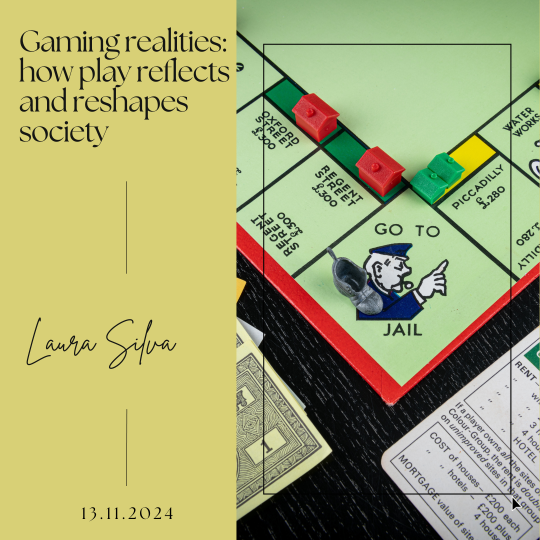
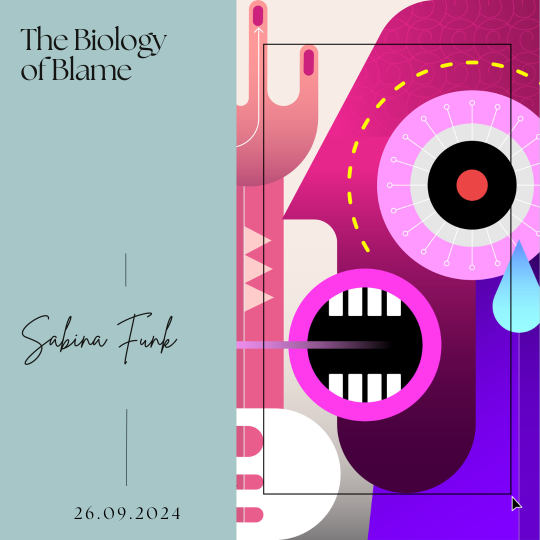
Leave a Reply